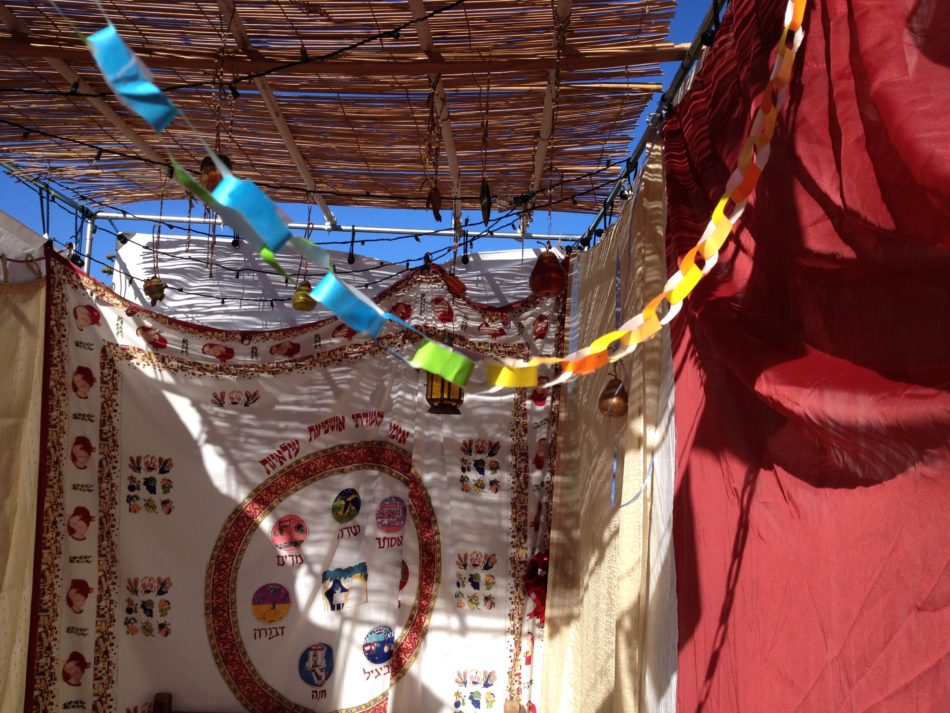
I love Sukkot. It is really the closest to a purely joyous holiday – along with Shabbat – in the Jewish calendar. Rabbi Larry Milder of Beth Emek in Pleasanton wrote two terrific pieces about Sukkot and I want to share them with you.
Describing Sukkot’s relationship to Yom Kippur, he wrote:
Philo of Alexandria asked: Why do we fast for an entire day on Yom Kippur?
One pauses before a meal to recite a blessing.
The “meal” of the year is the harvest, which will sustain us through the coming months. And so, the pause is a long one.
To our ancestors, the biggest festival of the year was Sukkot, the week-long celebration of the fall harvest. Yom Kippur is like pausing to recite Motzi before Sukkot.
And while Rosh Hashanah and Yom Kippur are deeply spiritual and contemplative times, the week of Sukkot will be filled with celebration and gatherings here at Congregation Beth Emek.
In the Bible, Sukkot was “heChag,” The Festival, par excellence. Nothing compared to it.
Rabbi Milder also describes Sukkot in terms of its role as one of the three Festivals.
Reclaiming Sukkot
Sukkot is called The Festival by the rabbis, HaChag in Hebrew, meaning the holiday par excellence. Nothing compares with Sukkot. That was true in ancient times, and is still true today.
Two thousand years ago, our ancestors would make their way to the Temple in Jerusalem on Sukkot, carrying with them the bounty of their harvest. There are three pilgrimage festivals, three times when the Israelites were commanded to appear before God at the Temple: Pesach, Shavuot and Sukkot. Pesach and Shavuot, the spring and summer harvests, were joyous occasions, but not quite like Sukkot. Pesach is marked by numerous restrictions. The pleasure that we find in the return of green vegetables to our plates (represented by Karpas), is moderated by the reenactment of slavery in the form of Matzah. Freedom is in hand, but redemption is not yet complete.
Shavuot, the summer festival, was a time when the hard work of the barley harvest was complete. But the holiday is brief, only one day, and virtually no rituals are mentioned in the Torah concerning Shavuot.
Only on Sukkot is there unremitting joy (“Zman Simchateinu”). The year’s harvest is in, the work is done, and the miracle of this natural world can be acknowledged in all its glory. Hence, the colorfully decorated Sukkah, and the Lulav and Etrog that are designed to appeal to the whole array of our senses: sight, taste, smell, touch, and in the waving of their leaves, even sound.
Judaism has always taught this awareness of nature and of our place in the cycle of existence. Our rituals are at once ancient and contemporary, powerful and poetic. Something about this season heightens people’s sense of the sacred. I hope that you will join us in celebrating the festival of Sukkot, and reclaim for yourself the sacred meaning our ancestors found in this time of year.
All around the community synagogues and many families have erected their sukkah. Look at the websites of the synagogues near you and see when they are having a meal in the sukkah, or some other activity. Visit! Sukkot truly is THE FESTIVAL.
